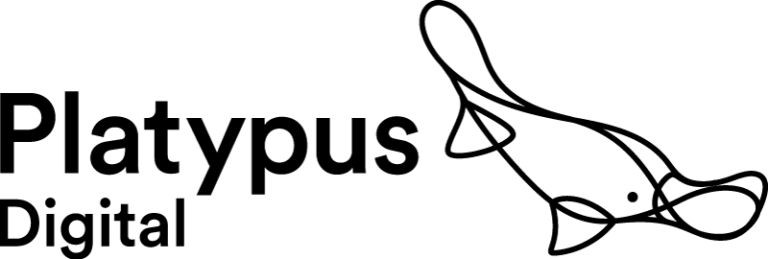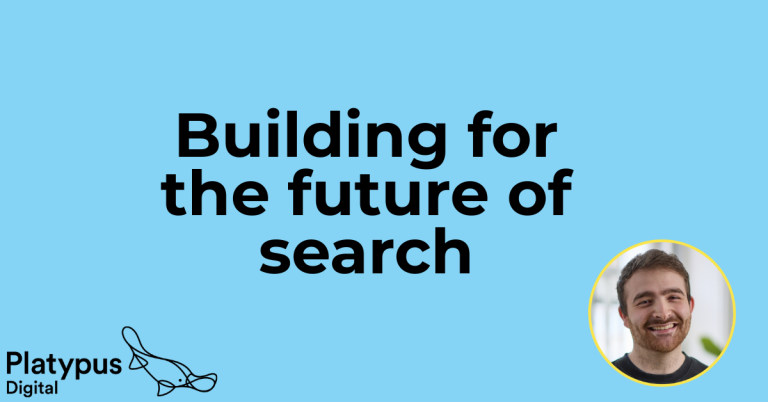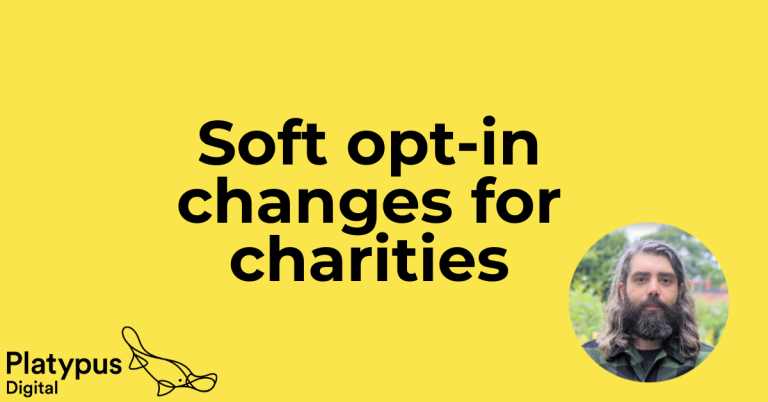The way people find information online is changing fast. AI search tools like ChatGPT and Google’s AI Overviews have already changed how people find and consume information. These systems synthesize answers from many pages and often present a short summary with source links, meaning users increasingly get the information they need without clicking through to the original site.
The data shows that people are quickly adapting their search behaviour. Google now reports over 1.5 billion people use AI Overviews a month in search.
Whilst overall traffic availability is lower, AI search offers different opportunities. Conversion and engagement rates from traffic that comes through to sites from AI search platforms are higher. One study found a 30% increase in conversion rates for users coming from AI search platforms. Ranking in AI search is also fantastic for brand visibility. Being cited as a key source of information shows you’re trusted as experts on your cause.
Charities with rich informational content need to now think beyond their rankings in the “10 blue links” for visibility. Websites are still absolutely necessary and are important, but the expectations and purpose of websites have already begun to shift. Optimising your website to appear in AI powered search platforms and LLMs will be the crucial next step over the coming years to make sure your charity remains visible to those who need you the most.
This guide is aimed to help charities ensure their content is visible, credible, and ready for these AI systems.
How AI search works today
Current AI search combines advanced language models with traditional search indexing. Behind the scenes, tools like Google’s Gemini or ChatGPT use techniques such as “query fan-out”, running multiple related searches and aggregating results, to build comprehensive answers. These answers often include citation links to original web pages to show their information sources.
AI systems need structured, accessible content to present this information to users. If your page isn’t crawlable or has a confusing layout, it may be ignored in LLM answers. AI platforms look for clear headings, bullet points, and other signals that make it easy to extract information.
They also prefer data that can be verified. Citing authoritative sources and including facts or figures helps an AI trust your content.
All this is to say that AI search still ultimately provides users with information and surfaces relevant links, but it now uses sophisticated new techniques to reach the end results, which look dramatically different from search results even just a year or two ago.
How user search behaviour has shifted
Users are beginning to adapt their search behaviour to better utilise the capabilities of these new AI search tools.
This reflects a move away from “keywords” and more towards “prompts”. Keywords are often quite broad, looking for general information. Prompts on the other hand are starting to become longer, a more detailed way of searching, including context and details that guide AI search platforms to provide information tailored to that searcher.
Example search
Previously, someone looking to understand a pain in their abdomen might have searched for “pain in my upper abdomen” and seen the following results:

They’d be left to click through several different options, reading through loads of information about different symptoms and causes of abdominal pain.
On the other hand, AI search platforms allow users to give much more specific prompts to get better information that’s tailored to their situation. For example:
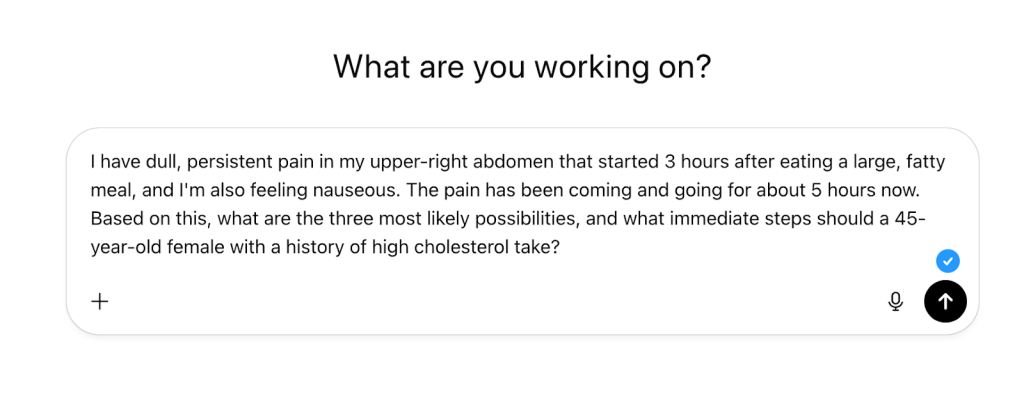
The resulting information is much more tailored to the searcher’s actual situation, and helps narrow down the options for the searcher:
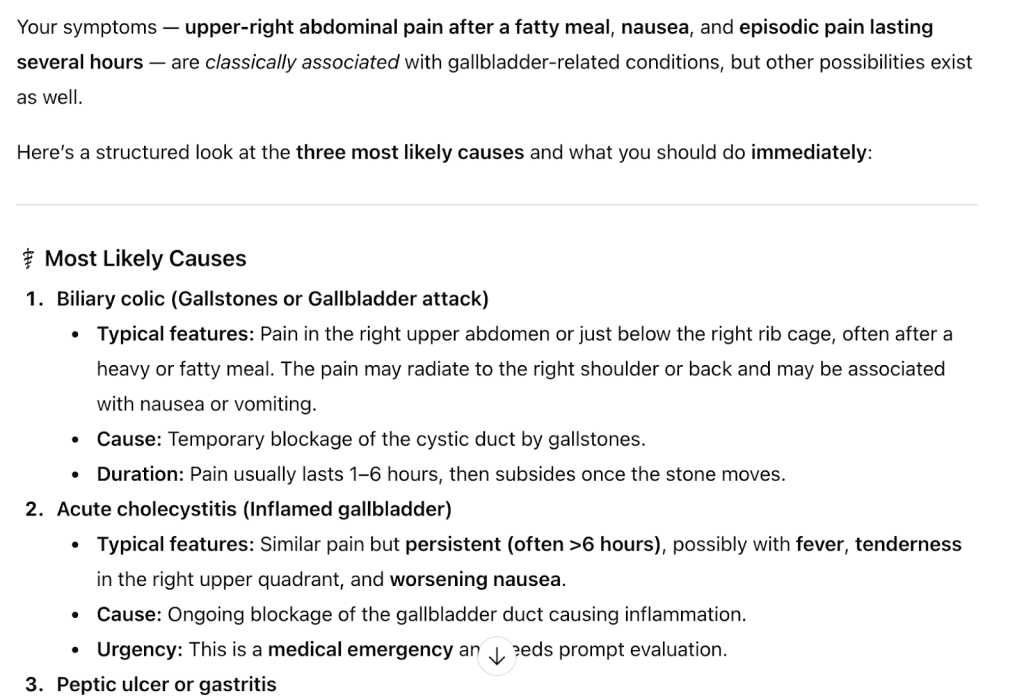
Of course, it’s impossible for AI search platforms to actually diagnose medical conditions – but this is still how users have already begun to use AI search.
It’s crucial that the information being provided by the platforms is accurate, reliable, and ideally, showcases your charity as the cited source of information. This way, users looking to get further information or support will click through to your website.
In this scenario, the UK charity GUTS was cited as a key source of information for this response, having a detailed page covering Gallstones and their symptoms and causes.
How to optimise your site for current AI Search
1. Prioritise authority and trust
AI search platforms reward credible, expert content. If these platforms surface obviously incorrect answers, users stop trusting them. Make your organisation’s expertise visible across your content: show authorship of your content, cite your sources for facts and figures, and showcase your organisation’s latest research or impact.
In doing this, you’ll develop your brand reputation and credibility, making it more likely that you’ll become a regular source of information from AI search platforms. The more AI search platforms can see about your organisation, the better it understands you and the quality of your website, the easier it is for these tools to cite you in their answers.
This emphasis on experience, expertise, authoritativeness and trustworthiness (E-E-A-T), Google’s own guidelines for quality content, now underpins visibility in AI search just as much as in traditional search.
2. Create clear, comprehensive content
Quality content has always been king, and that’s truer than ever for AI search.
Cover specific questions in depth
The goal isn’t just to answer users’ questions thoroughly and clearly, but in a way that an AI system will want to include your answer in its summaries or responses
Keep each page focused on a single topic, break complex subjects into separate pages and house them together in informational hubs, and anticipate follow-up queries in your writing.
Consistently use clear headings to structure and signpost your content
AI search platforms don’t assess your content’s relevance on a page level, they look at the relevance of your content by individual sections of your page.
Make sure that your content is well structured with headings, covering a question fully before moving onto the next heading.
Break down your content into question-led sections and provide direct answers. For example, if you were a charity creating a page on the causes of homelessness in the UK, you might include the following sub-headings:
- H1: What causes homelessness in the UK?
- H2: Who is most at risk of becoming homeless?
- H2: How do housing costs and supply affect homelessness?
- H2: What role do benefits and income problems play in people becoming homeless?
- H2: How do health and addiction contribute to homelessness?
- H2: How do family and relationship breakdowns cause homelessness?
- H2: Can homelessness be prevented?
- H2: What should someone do if they’re at risk of homelessness right now?
Short paragraphs, bullet or numbered lists, and clear headings make your content read as answers, rather than just information provision. This is exactly the format of information that AI tools look to extract.
Keep content up to date
AI answers often emphasize current, accurate information, especially for sensitive areas like health or finance.
Review your pages regularly to ensure facts and recommendations align with the latest research or guidelines, and then showcase when your page has been reviewed.
3. Make your content machine-friendly
AI systems assess structure as well as words.
Use a logical heading hierarchy, make answers scannable with lists and concise sections, and ensure your site is technically accessible, so crawlers can read it.
By focusing on structural best practices, you help ensure AI tools can see and use your content. A strong technical foundation, good HTML, accessible site, and rich schema, is one of the most concrete steps you can take now to be included in AI answers.
4. Showcase what only you have
There is a lot of content out there. You’ve got to work hard to make sure your content stands out.
Add unique data or personal insights throughout your content. You can do this by providing proprietary data (survey results, internal research, impact numbers) or unique quotes from experts in your organisation.
If possible, use storytelling, case studies or real examples from your beneficiaries where appropriate. These elements can make your information more compelling and likely to be quoted by an AI as “authentic.”
5. Expand beyond written content
AI platforms now have the ability to draw from a huge range of sources of information.
AI platforms can assess which formats of information are the most relevant to meet a user’s needs. A video might be best placed to show someone how something is done, or an infographic might be more suitable to explain a process.

It’s important to expand your content offering so that as and when AI platforms decide that written content isn’t the preferred format of information for a particular query, you have other formats available.
Don’t forget to leverage your content across social platforms. Snippets of text, videos, quizzes and podcasts can all be great ways to leverage your existing content across other channels. This further reinforces your visibility and your reputation, solidifying AI platforms’ knowledge of you as a charity.
Building for the future of search
AI powered search is not a passing trend. It’s already reshaping how people discover and trust information online. Charities, with their wealth of expertise and public trust, are in a strong position to adapt and capitalise on the way that AI search platforms work.
The charities that succeed in this new environment will be those who:
- treat AI visibility as an extension of their mission to be a reliable source of truth,
- continue to invest in solid SEO foundations, and
- layer on new practices that make their content accessible, verifiable and compelling for both people and machines.
Remember – SEO fundamentals remain the bedrock of website optimisation. Without them, you won’t be visible on AI platforms.
With those foundations in place, Generative Engine Optimisation (GEO) becomes a real opportunity. Making sure your content is not just findable, but also quotable in the answers that people increasingly turn to first.
The shift we’re seeing is not about chasing clicks alone, but about maintaining visibility, credibility and trust wherever your audience goes to seek information. By preparing now, your charity ensures that when someone needs you most, your voice is still part of the answer.
Need help with your Generative Engine Optimisation?
Find out more about how we can help charities with their generative engine optimisation (GEO).
Also find out how we can help your charity improve its SEO.
